Repurposing historic spaces into vibrant destinations
By Jodie Dello Stritto
The history of Johnstown’s Cambria City neighborhood is deeply intertwined with the region’s industrial growth and immigrant heritage. Established in the mid-19th century, Cambria City became a melting pot of diverse cultures, populated by immigrants who arrived in search of employment opportunities offered by the booming steel industry.
The neighborhood’s development was linked to the Cambria Iron Company, one of the largest and most influential steel manufacturers of the era, attracting a workforce from various ethnic backgrounds, including Slovak, Hungarian, Polish, Croatian, Italian, and Irish immigrants. This influx of diverse populations contributed to the unique cultural tapestry of Cambria City, reflected in the numerous ethnic churches, social clubs, and businesses that met the specific needs of these communities.
During the 20th century, the decline of the steel industry had a profound impact on the once- thriving neighborhood, leading to economic challenges and population decline. A renaissance in recent years has been driven by efforts to preserve its historical heritage and promote cultural tourism. Restoration projects have revitalized many historic buildings, and annual events like the Cambria City Ethnic Festival celebrate the neighborhood’s rich cultural history.
From its beginning, Cambria City’s ethnic churches in particular were more than places of worship; they were community centers that helped immigrants maintain their cultural identities and provided support networks in a new country. As the demographics of the neighborhood changed and congregations dwindled and were consolidated, and many churches closed. Now, they are finding new life through innovative projects aimed at preserving their architectural beauty and historical significance.
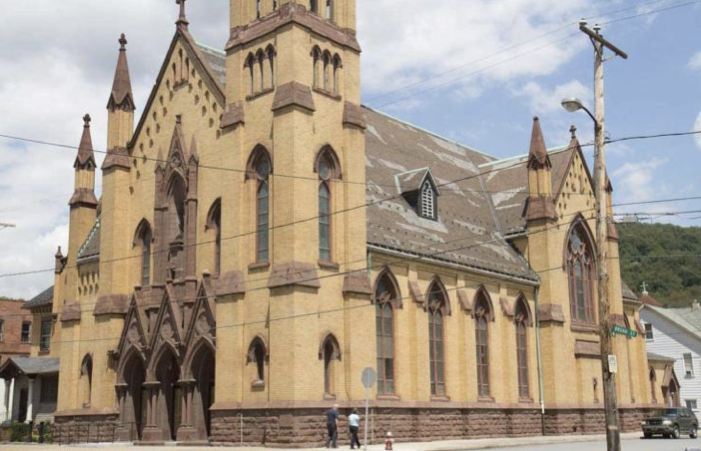 The Steeples Project Website
The Steeples Project Website
The Steeples Project is a dedicated community-driven initiative aimed at transforming these historic churches into vibrant community spaces, through sustainable repurposing. The project not only preserves the architectural beauty of the buildings but also breathes new life into the neighborhood, making it a destination for local residents and visitors.
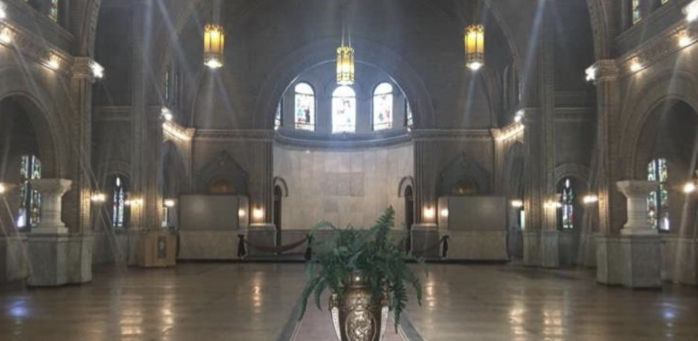 Image Credits: Casimir Cultural Center Website
Image Credits: Casimir Cultural Center Website
The Casimir Cultural Center in the former St. Casimir Roman Catholic Church hosts culturally diverse concerts, small theater productions, symposiums, art and music events, festivals and private events. The historic structure, built in 1902, also houses a permanent collection of treasured artifacts from the closed parishes of Cambria City and items that reflect the ethnic and religious heritage of the region. The building is now owned by Cambria City-based Stella Property Development and Event Production LLC, a privately owned company that shares a mission to preserve and revitalize the area.
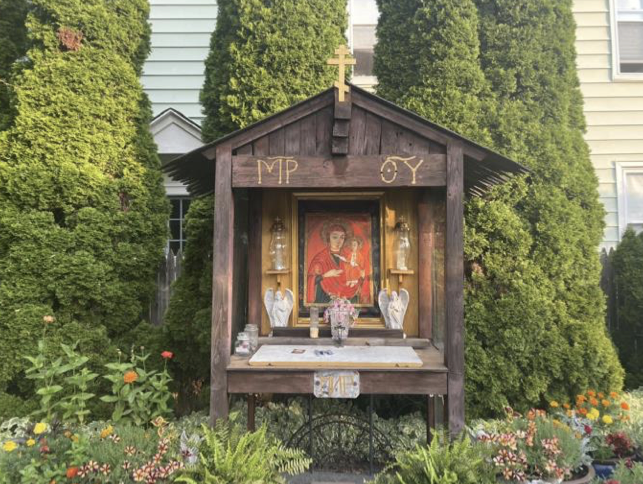 Shrine and Garden of Our Lady of Mariapocs, Cambria City Facebook
Shrine and Garden of Our Lady of Mariapocs, Cambria City Facebook
Stella also owns the Shrine and Garden of Our Lady of Mariapocs and Emerich Place, a multi- use retail space in Cambria City. Named for the former St. Emerich Magyar Catholic Church, it houses Cambria City Flowers, Amerigo’s Fine Grocery and Alchemie, the Magic of Mixing and Mingling.
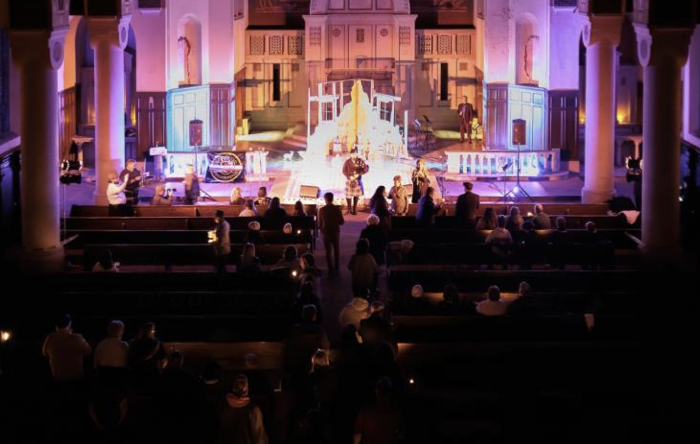 The Columba Theatre Project Website
The Columba Theatre Project Website
The Columba Theatre Project aims to fully convert the former St. Columba Church, a beautiful Lombard Romanesque church building into a well-equipped theater for dramatic arts. The building was designed by architect John T. Comès of Pittsburgh, a prolific liturgical architect of the early 20th century, and built between 1913 and 1915. The proposed 300-seat theater would be the venue for a professionally produced, locally inspired historical drama; a home-stage for local theater companies, enabling them to stage other productions year-round; and a center for other performing arts. A feasibility study indicated that the $3 million project is capable of an annual economic impact of $2.7 million and supporting 52 jobs.
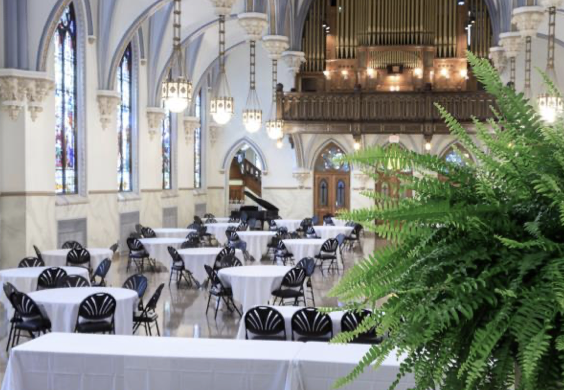 The Grand Halle on Broad Street Website
The Grand Halle on Broad Street Website
A renovation project completed in 2020 transformed the former Immaculate Conception Church into The Grand Halle concert and event venue. With its Munich-style stained glass, Victorian Gothic decor and resonant Adam Stein pipe organ, the Halle is a unique, multi-purpose venue that serves the entire region. The building was developed in 1907-08 and survived the floods of 1936 and 1977 and two destructive fires during the 1980s.
Other churches in the neighborhood are being repurposed into arts and cultural centers, further enhancing Cambria City’s appeal as a cultural and historical hub. These efforts are not only preserving the neighborhood’s architectural heritage but also fostering a vibrant community atmosphere. For travelers seeking a unique and enriching experience, a visit to Cambria City illustrates how preservation and transformation can build community spirit and enhance the quality of life. Learn more about The Steeples Project.


